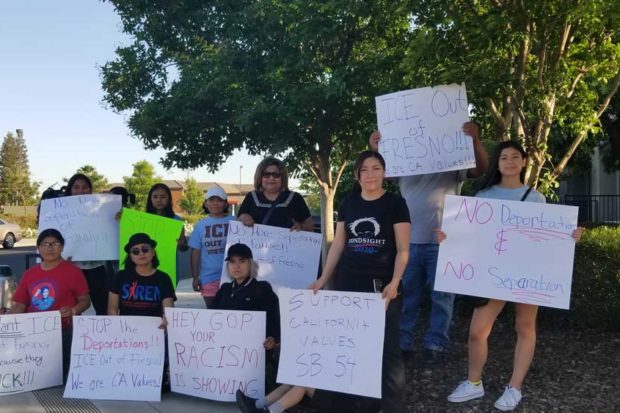
By Ben Monterroso
The systematic attacks against the migrant community by the Trump Administration have re-manifested in the public agenda in recent weeks. The newest clash is between the different levels of government, in regards to the flexibility that some cities have with migrants and immigration enforcement. Areas in which law enforcement and immigration maintain separate functions are generally referred to as “Sanctuary Cities”.
The term “Sanctuary Cities” is used today to name cities in the United States that implement policies to limit their collaboration with federal immigration authorities. As it is not a legal term, implementation can vary, but the policies can be established in the legislation or they can simply be local police practices. The essential and widespread practice implies that when a resident of one of these cities comes into contact with the police, immigration status does not influence the interaction.
There are six states that have sanctuary cities: California, Colorado, Illinois, New Mexico, Oregon and Vermont. Of these six states, there are 67 sanctuary cities, with the cities of Miami, Los Angeles, Seattle, San Diego, Austin, Boston, Houston, Chicago, San Francisco and Denver being the most representative. Finally, there are 132 counties that make up the 67 sanctuary cities.
The Trump Administration has been against sanctuary cities since the beginning of their campaign, falsely depicting them as a hotbed for immigrants and violent criminals. In his eagerness to force sanctuary cities to change their stance, Trump enacted an executive order in January of 2017 conditioning the distribution of resources to these cities. He was unsuccessful in his order due to lawsuits filed by sanctuary cities and states – culminating in a Chicago judge blocking this order.
On March 20, Pres. Donald Trump announced that the Department of Justice sued the State of California for three laws, which, according to the DOJ, impede the application of federal immigration laws and prevent the sharing of information between federal and state authorities. In this way, they tried to disguise the attack on the migrant community as a public safety matter and as a way to keep criminals out of the region.
On April 19, Trump thanked San Diego County for the decision to join the Department of Justice’s lawsuit against California’s immigration policies. The claim is against the California Values Act, or SB54, a measure that limits the amount of local law enforcement that can help federal immigration authorities, which went into effect on Jan. 1.
The issue in dispute at the local level within the state of California has become whether or not to let U.S. Immigration and Customs Enforcement (ICE) in.
The basic argument for these claims against the SB54 law is that it is the federal government, and not the state, who has the ultimate authority on immigration issues. There are already 10 entities that have joined the lawsuit against SB54; Huntington Beach, Mission Viejo, Aliso Viejo, Fountain Valley, Newport Beach, Orange, San Juan Capistrano, Westminster, Yorba Linda (in Orange County) and Escondido (in San Diego).
The current manifestations of groups that reject the migrant community and promote the withdrawal of the SB54 law serve as yet another example of how Trump’s xenophobic discourse has found support in a sector of the population. It is clear that the solution for this administration is the segmentation of the population and the promotion of hatred toward the migrant community. The worrying thing is that immigration reform is nowhere to be found as a viable solution for our communities, which leaves the door open for further attacks in the near future.
If a political and social structure is being formed against the migrant community — a constituent part of our Latino community— we need to establish a collective organization process that stops the attacks. Our weapon is our vote, which is why we have to go out together to elect the right representatives into Congress in the next midterm elections.
It is necessary to touch on this sensitive issue for our Latino community, because it directly affects us, while, at the same time, becoming a key factor for collective reflection of our vote in the upcoming midterm elections to choose the new representatives and senators.
Ben Monterroso is the Executive Director of Mi Familia Vota. You may contact him through @MiFamiliaVota on Facebook and Twitter.
